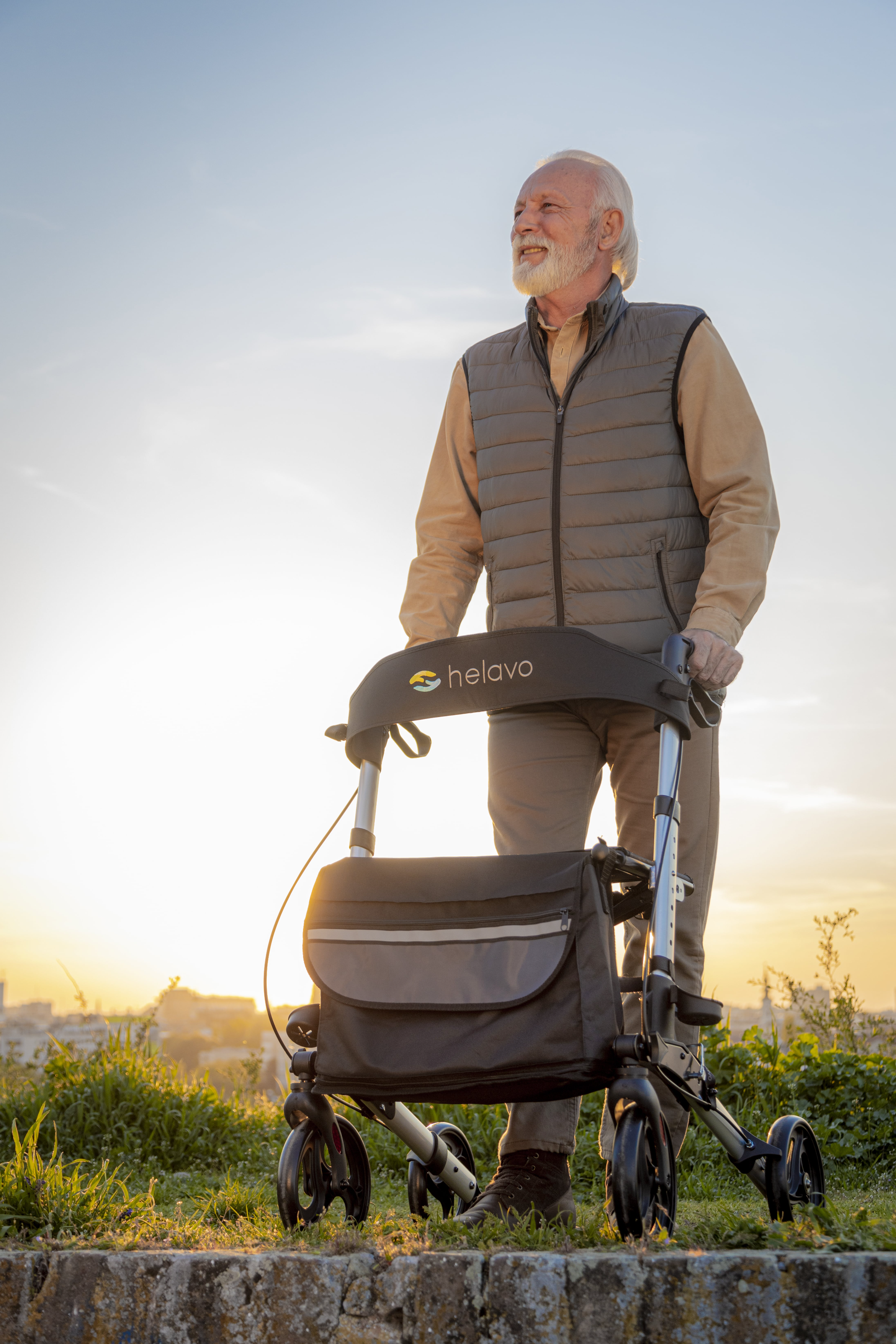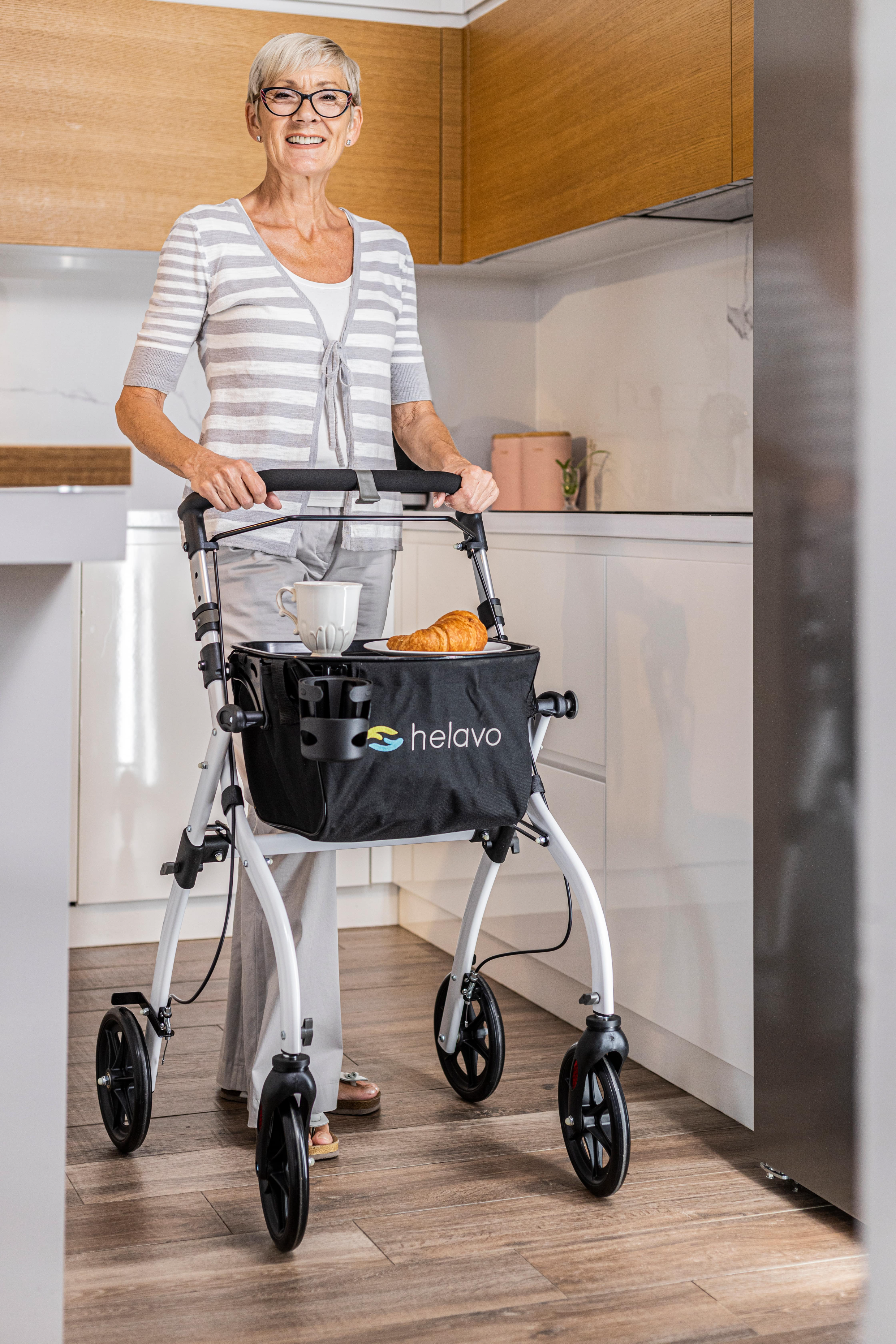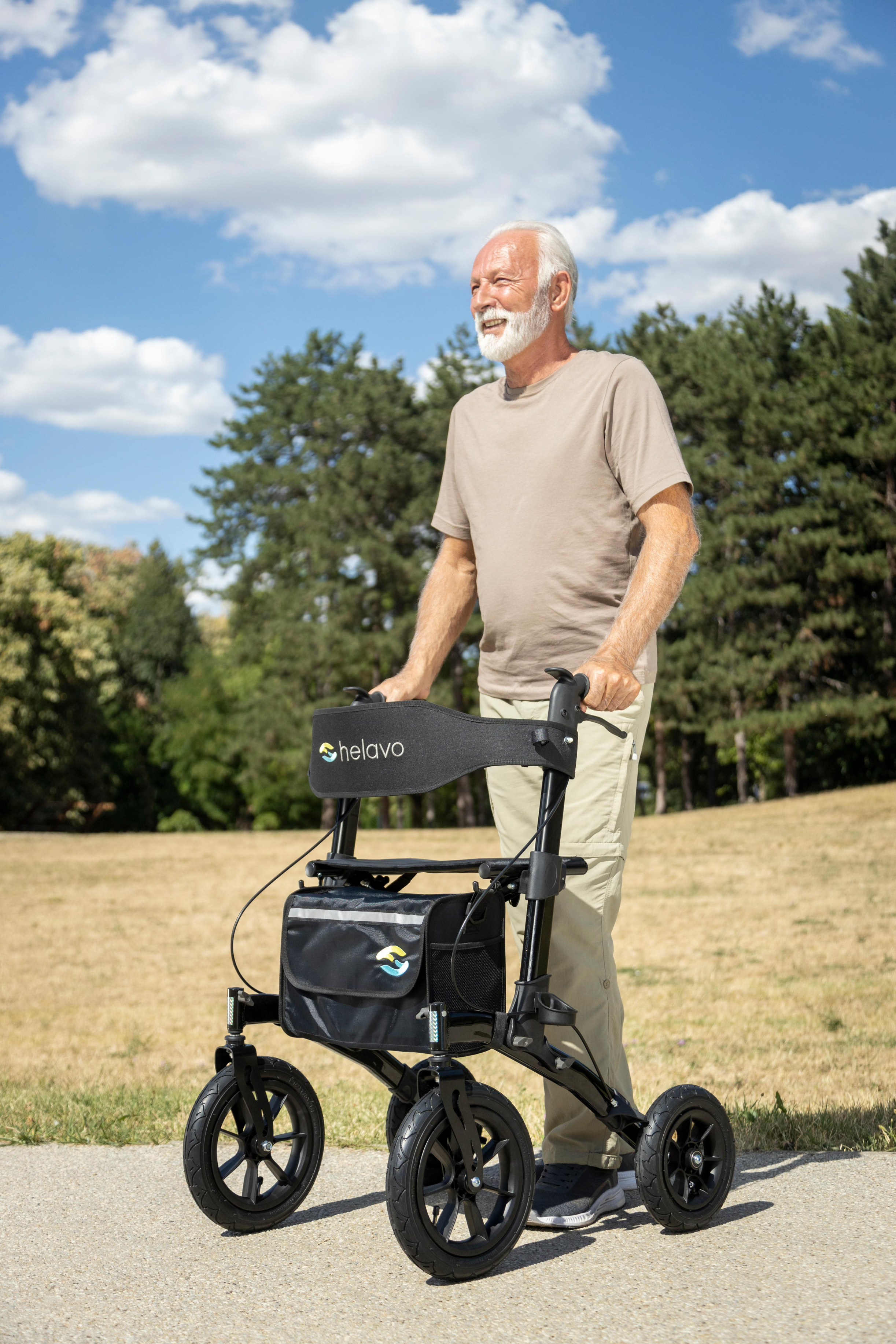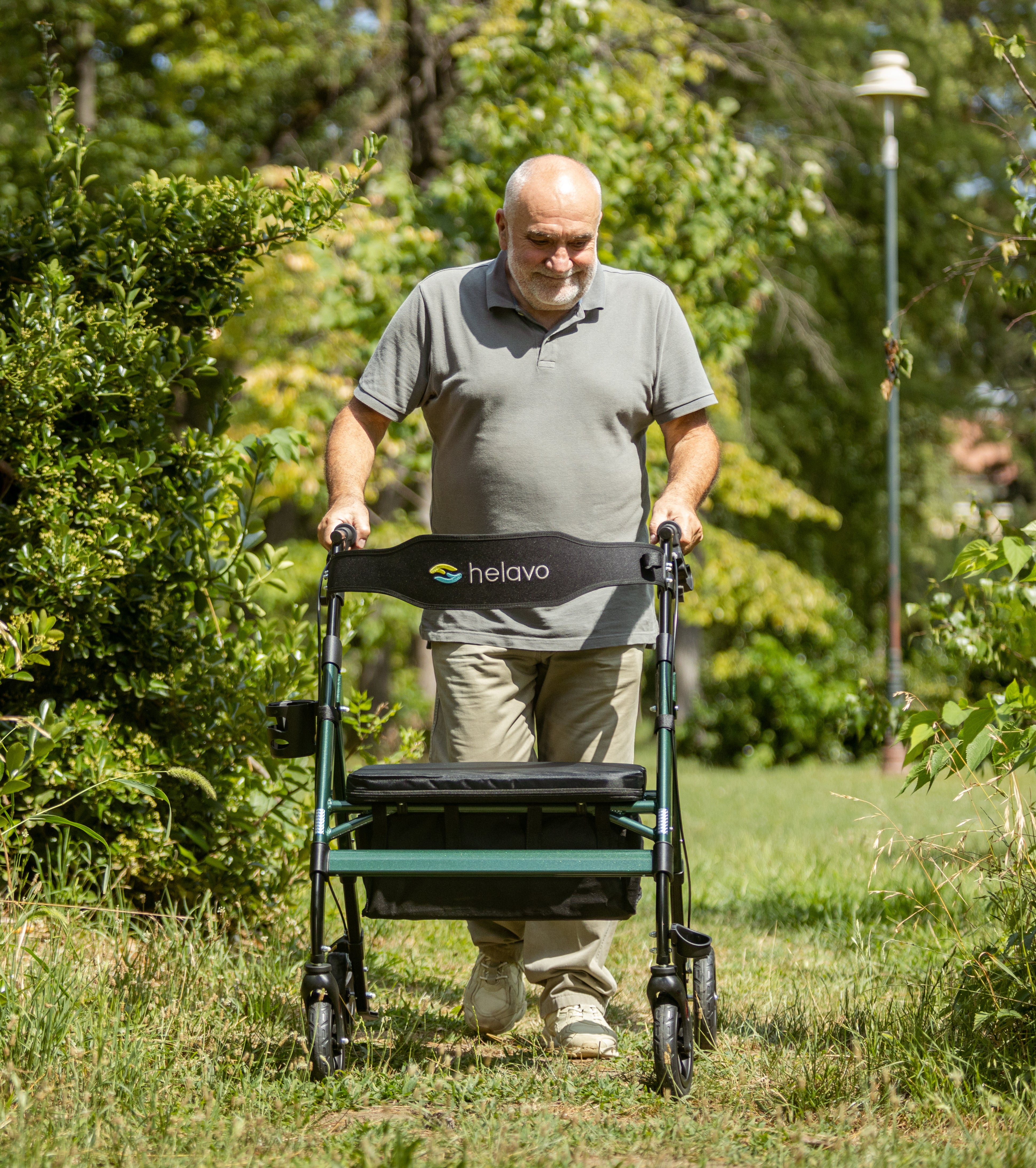Choosing the right tires is crucial for the comfort, safety, and everyday usability of mobility aids such as walkers or wheelchairs. Two common options are pneumatic tires and solid rubber tires. Both have specific advantages and disadvantages that can vary depending on the application and individual requirements.
Pneumatic tires
Pneumatic tires are tires filled with air that are characterized by their flexibility and shock absorption.
Advantages:
-
Excellent shock absorption: Ideal for uneven surfaces such as cobblestones or forest paths, as they effectively cushion bumps.
-
More comfortable ride: The air filling ensures a smoother ride, which is particularly pleasant on longer journeys.
-
Better traction: On slippery or soft surfaces, pneumatic tires often provide better grip.
Disadvantages:
-
Susceptibility to punctures: There is a risk of tire punctures caused by sharp objects.
-
Regular maintenance : The air pressure must be checked and adjusted regularly.
-
Less durable: Compared to solid rubber tires, they can wear out faster.
Solid rubber tires
Solid rubber tires are made of solid rubber and are particularly robust and low-maintenance.
Advantages:
-
Puncture-proof: Since they do not have an air tube, they are insensitive to sharp objects.
-
Maintenance-free: No re-pumping or air pressure check required.
-
Durable: High resistance to wear and weather influences.
Disadvantages:
-
Less shock absorption: Vibrations can be transmitted more strongly on uneven surfaces.
-
Less comfort: The ride can be perceived as harder on longer journeys.
-
Limited traction: On certain surfaces, grip may be less than with pneumatic tires.









